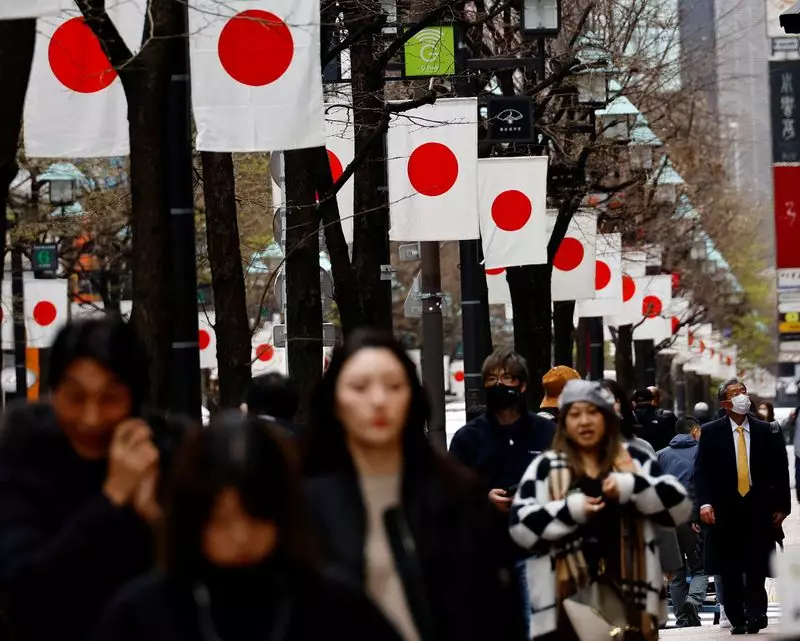The latest Tankan survey from Japan reveals a nuanced landscape for the nation’s manufacturing and non-manufacturing sectors. While big manufacturers have shown a marginal improvement in sentiment, non-manufacturers face significant challenges. This precarious balancing act presents a complex scenario for the Bank of Japan (BOJ) and its future interest rate policies. Analyzing this survey provides valuable insights into the current state of the Japanese economy while highlighting the underlying concerns that could hinder sustained growth.
According to the Tankan survey, the confidence index for major manufacturers edged up to +14 in December, its highest level since early 2022. This marks a subtle yet promising shift from +13 three months prior, buoyed largely by a recovery in automotive production and an uptick in capital expenditures. For a nation heavily reliant on manufacturing, this improvement instills cautious optimism regarding the potential for economic growth.
The resurgence in auto production can be attributed to increasing global demand, suggesting that manufacturers are finding ways to navigate persistent headwinds, such as supply chain disruptions and inflationary pressures. Experts like Saisuke Sakai from Mizuho Research & Technologies believe that these signs reflect broader resilience within the manufacturing sector, offering an encouraging outlook to the BOJ as it prepares to recalibrate its monetary policy.
In stark contrast, the mood within the non-manufacturing sector presents a less favorable picture. Retailers and hospitality businesses reported a significantly worsening sentiment, with struggles to recruit staff compounded by rising labor and raw material costs. This dichotomy between sectors underscores the uneven recovery experienced within the Japanese economy. Economists, such as Kazutaka Maeda from Meiji Yasuda Research Institute, highlight the signs of frugality among households alongside a plateau in demand from international tourism—a dual challenge for service-oriented businesses.
The rising costs of inputs, coupled with an intensifying labor shortage, have created an environment where many non-manufacturers are left grappling with the implications for profitability. It is indicative of a deeper structural challenge that could stifle growth in one of the economy’s critical pillars.
Despite the pressures on the non-manufacturing side, big companies remain committed to increasing capital expenditures, projecting an 11.3% rise in the fiscal year ending in March. This figure surpasses both market expectations and previous projections, reflecting a willingness among some firms to invest in future growth even amidst uncertainty. Such investment tendencies are essential for economic vitality, offering the potential for job creation and improved productivity.
Furthermore, the survey suggests a general expectation among companies for inflation to hover above the BOJ’s 2% target over various timeframes. This anticipation of sustained price increases aligns closely with the BOJ’s objectives and could provide a basis for forthcoming interest rate adjustments. As inflation remains a focal point for economic policy, the degree to which companies internalize these rising costs will be a determining factor for future rate hikes.
Despite the optimistic indicators within manufacturing, the report also cautions that the road ahead may be fraught with complications. The uncertainty surrounding U.S. trade policies, particularly under President-elect Donald Trump, poses a significant risk. Manufacturers have expressed concerns that potential tariffs and changes in trade dynamics could undercut profit margins, especially for the automotive sector, which relies heavily on global supply chains.
Moreover, domestic challenges loom large. The labor market is tightening, creating obstacles for non-manufacturers who are increasingly unable to find skilled workers. As wages rise in a bid to attract talent, companies in sectors like retail and hospitality may face further pressures on their bottom lines. Such dynamics could culminate in reduced consumer spending, which in turn could dampen overall economic growth—a scenario the BOJ is keen to avoid.
The mixed signals from the Tankan survey encapsulate the complexities facing the Japanese economy. While manufacturers exhibit cautious optimism, non-manufacturers navigate a quagmire of challenges that threaten to impede broader economic recovery. As the BOJ approaches its next policy meeting, it must weigh these contrasting sentiments carefully. The central bank remains vigilant in its monitoring of inflationary trends and global risks, recognizing that the health of the economy is contingent upon its ability to address both sectors’ needs. Thus, Japan stands at a pivotal juncture, balancing growth aspirations against prevailing uncertainties in a rapidly changing economic landscape.

